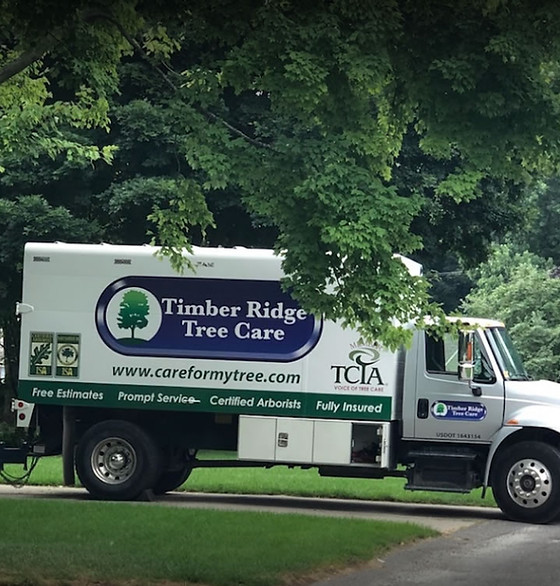Pest infestation is typically found on sick or stressed trees. Reducing primary stressors such as hot droughts or planting non-native species that don’t thrive in local conditions can help protect them against insects or diseases.
Supplementing tree roots during summer heatwaves with extra water is another effective defense, while avoiding moving infested firewood to limit EAB (Emerald Ash Borer), an invasive insect responsible for killing ash trees.
Elise
Grand Rapids Tree service can help with this. Learn more about them at their website: https://grandrapidsmitreeservices.com Spongy moth damage causes defoliation and declines tree health, as its caterpillars feed on various host species including fruit trees, grapevines, hops and oaks.
Identification tips: For successful identification, look out for sawdust under trees, red-brown bark coloration and serpentine tunnels within leaves.
Cultural control strategies help reduce pest problems by keeping trees healthy and stress-free, such as proper pruning, thinning and providing additional watering during drought periods.
Guillermo
Guillermo brings his knowledge in physics to tree work with an analytical approach and enjoys applying his knowledge directly. Furthermore, his clever jokes always keep his crew laughing!
Insect pests often target unhealthy or stressed trees. You can reduce stress by improving soil conditions, pruning trees regularly and creating watering schedules to address them effectively.
Oregon residents should take precautionary steps against Mediterranean oak borer (MOB). Protect your trees by inspecting wood for signs of MOB infestation before moving or using it.
Carson
The Emerald Ash Borer (EAB) poses a threat to native ash species as well as commonly planted non-native and cultivated ones in urban landscapes, creating serpentine tunnels beneath their bark that weaken trees by creating larvae-filled chambers and tunneling systems under their bark. Larvae create holes to access their larval food source which ultimately choke off trees girdling them with disease and weakening them resulting in their premature decline and death.
Bartlett employs both cultural practices and insect control measures to combat this destructive beetle, such as swollen trunk areas or piles of brownish sawdust around oval-shaped exit holes. To minimize damage caused by this pest beetle.
Craig
Craig works as a photo shopper but is having difficulty making ends meet. After paying off their debts, they attempt to rebuild their standard of living but continue with old habits that hinder this goal.
Biology and Life Cycle: Adult bark beetles bore under tree bark to form tunnels for their nymphs to mine phloem and pupate within its cells, typically leaving cosmetic damage or defoliation but defoliation can severely compromise tree vigor; stressed trees are especially susceptible; encourage their health by optimizing water and nutrient management practices.
Garrett
Bark beetles burrow beneath the bark, damaging phloem and cambium layers and spreading pathogens such as blue stain fungus which blocks water-conducting tissues in trees.
Emerald Ash Borers have devastated millions of ash trees throughout the Midwest and East Coast regions. Successful management requires cultural, mechanical, biological and chemical strategies for suppressing this pest.
Cultural controls for trees include watering and mulching well, pruning during winter pruning season, selecting tolerant species/cultivars and scheduling regular inspections to detect insect infestations that could spread further throughout the tree.
Steve
Bark beetles can be an alarming sight, burrowing under bark and feeding on phloem and cambium layers of trees while also spreading pathogens such as blue stain fungus, which clogs water-conducting tissue called the xylem and reduces health and vitality of trees.
Cultural and mechanical control strategies exist for this pest. Stressed trees are more vulnerable to attack; therefore, water and nutrient management should be strictly adhered to to reduce stress. Winter pruning will further lower susceptibility while sanitation practices with plant material, lumber, and firewood should help decrease overwintering habitat.
Jacob
Jacob began his arboriculture career at Urban Foresters after earning a Bachelors in Physics. He loves applying his expertise while working in the canopy. Jacob is certified with both the International Society of Arboriculture (ISA) and Tree Risk Assessment Qualified Assessment Services of Canada Association Tree Safety Professional designations; you may spot him teaching crew members or performing aerial work throughout his day.
Stakeholders reported using 17 tools and methods for detecting PnPs, such as monitoring infected areas, research publications, experts or tree health advisory services, etc. Additionally, stakeholders requested more tools for detection and prevention – long-term citizen science monitoring, maps showing new pests’ spread, generic detection techniques etc.
Rachel
Deer are known to consume large amounts of foliage, damaging and slowing plant growth. To combat this issue, install barriers and install floral resource plantings to protect vulnerable areas.
Rachel not only excels at tree care but is also dedicated to community development, serving on the boards of Family Business Alliance, Davenport University Foundation and Grand Rapids YMCA. With two children of her own and her husband at home, Rachel loves gardening, reading and traveling – particularly visiting family. In her free time she also likes hiking camping and skiing!
